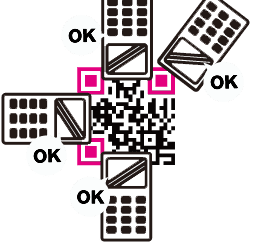Looking to boost your business? QR codes could be the solution you need! These two-dimensional barcodes hold far more data than the typical barcode and have a fascinating history:
As the adoption of QR codes increased, so did their complexity. The codes can now hold up to 7,089 numeric characters, 4,296 alphanumeric characters, and 2,953 bytes of binary data. Their uses have expanded too – now we see QR codes used in retail, contactless payments, identification and authentication, and inventory management. These days, not having a QR code in your business is like not having a website.
In conclusion, QR codes have come a long way since the mid-1990s and have become a reliable tool in modern-day business. Embrace the power of QR codes to help take your business to the next level.
QR Codes: A Brief Introduction
Quick Response Codes, commonly known as QR codes, are two-dimensional barcodes that were first developed in Japan in the 1990s. These codes can store vast amounts of data, including text, URLs, and other information, which can be quickly accessed by scanning the codes using a smartphone or a QR code reader. QR codes have become increasingly popular in recent years due to their ease of use and versatility, with businesses and individuals using them for various purposes, including marketing, advertising, and inventory management.
Early Development of QR Codes
QR codes were first developed in 1994 by Denso Wave, a division of Japanese auto parts manufacturer Denso Corporation. The company developed QR codes to help automate the inventory management process for its factories. The codes were initially used to store information about the parts manufactured, but their use soon expanded to other applications, such as product tracking and point-of-sale transactions.
QR codes quickly gained popularity in Japan and other parts of Asia, but their adoption in Western countries was slow. This was partly due to the slower adoption of smartphones and mobile devices, which are required to scan QR codes. In the early 2000s, QR codes began to gain traction in Europe and the United States, where they were mainly used for marketing and advertising purposes.
The Evolution of QR Codes Over the Years
Since their inception, QR codes have undergone several improvements and advancements to enhance their functionality and appeal. Some of the significant changes to QR codes over the years include:
Size: Early QR codes were limited in size and could only store a small amount of data. However, with advancements in technology, QR codes can now store up to several hundred times more data.
Error correction: QR codes are designed to be readable even when parts of the code are damaged or obscured. Error correction capabilities have improved significantly over the years, ensuring that codes remain readable even in low-quality printing or scanning environments.
Customization: Modern QR codes can be customized to include brand logos, colors, and other visual elements, making them more appealing and recognizable to users.
The Significance of QR Codes in Modern Times
QR codes have become ubiquitous in modern times, with businesses and individuals using them for various purposes. Some of the key benefits of QR codes include:
Convenience: With the widespread adoption of smartphones and mobile devices, QR codes have become an easy and convenient way to access information, such as product details or service offers.
Traceability: QR codes can be used to track products, materials, and other items throughout their lifecycle, providing valuable insights into inventory management and supply chain optimization.
Marketing: QR codes have become a popular marketing tool, with businesses using them to promote products and services, run promotions, and generate leads.
Popular Use Cases for QR Codes
QR codes can be used in numerous ways, depending on the needs of the user or the business. Some of the most popular use cases for QR codes include:
- Product information and details
- Mobile payments and transactions
- Event ticketing and registration
- Inventory management and tracking
- Marketing and advertising campaigns
- Business card and contact information sharing
The Future of QR Code Technology
With the continued growth and innovation in mobile technology, QR codes are likely to play an increasingly significant role in business and everyday life. Some of the potential developments in QR code technology include:
Enhanced security: QR code security could be improved to prevent fraud and counterfeiting.
Integration with IoT: QR codes could be used in conjunction with IoT devices to enable new applications and services.
Smart QR codes: QR codes could incorporate additional intelligence, enabling them to interact with users in new and innovative ways.
Potential Innovations in QR Code Functionality
In addition to the potential developments in QR code technology mentioned above, several other innovations in QR code functionality could emerge in the future. Some of the potential game-changing innovations in QR code functionality include:
Dynamic QR codes: Dynamic QR codes could be used to provide real-time information, such as stock prices or weather updates.
Voice-activated: QR codes could be activated by voice commands, enabling hands-free interaction with QR code-enabled devices.
Embedding into objects: QR codes could be embedded into objects such as fabrics, enabling new applications in fashion, art, and design.
In conclusion, QR codes have come a long way since their inception in the 1990s. From their early use in inventory management, QR codes have now become a ubiquitous technology used in various applications, including marketing, advertising, and inventory management. With continued advancements in mobile technology, QR codes are likely to evolve further, enabling new applications and use cases that were once unimaginable.





